by Erik Mink, 4th Virginia
I thought I might stray a little bit from uniforms and equipment, and share a couple of quotes concerning firing practices during the war. Although all three of these accounts were written by Northern soldiers, their sentiment could quite easily have been penned by men of Lee’s army.
At living histories we often refer to “firing by file” as the favored way in which the soldiers fought. In training officers in the instruction of firing, William Gilham states that “firing by file being that which is most frequently used against the enemy, it is highly important that it be rendered perfectly familiar to the troops.” William Hardee and Silas Casey have similar statements in their manuals, in fact Hardee asserts that “the instructor will, therefore, give it almost exclusive preference.” As we know, theory and practice can be very different. So how often did the officers in battle utilize this style of firing?
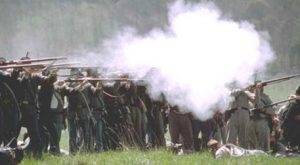 Rufus Dawes of the famed Iron Brigade penned on of the most vivid and informational memoirs of any officer in the Army of the Potomac. Having witnessed some of the heaviest firefights of the war, Dawes wrote with some amazement of his regiment’s participation in the Battle of South Mountain. In this particular action, Major Dawes wrote that the 6th Wisconsin Infantry moved forward: “The left wing fired a volley into the woods, and the right wing advanced in the same manner over them and fired a volley into the woods. Once more [Lieutenant Colonel Edward] Bragg gave a volley by the left wing. There were four volleys by wing given, at the word of command. In a long experience in musketry fighting, this was the single instance I saw of other than fire by file.” It seems interesting that this battle tested officer would mention that only once during the war did he ever witness fighting done by command other than fire by file.
Rufus Dawes of the famed Iron Brigade penned on of the most vivid and informational memoirs of any officer in the Army of the Potomac. Having witnessed some of the heaviest firefights of the war, Dawes wrote with some amazement of his regiment’s participation in the Battle of South Mountain. In this particular action, Major Dawes wrote that the 6th Wisconsin Infantry moved forward: “The left wing fired a volley into the woods, and the right wing advanced in the same manner over them and fired a volley into the woods. Once more [Lieutenant Colonel Edward] Bragg gave a volley by the left wing. There were four volleys by wing given, at the word of command. In a long experience in musketry fighting, this was the single instance I saw of other than fire by file.” It seems interesting that this battle tested officer would mention that only once during the war did he ever witness fighting done by command other than fire by file.
Another veteran officer, in the Army of the Potomac, that seemed amazed by the usage of volleys was Major Frederick L Hitchcock of the 132nd Pennsylvania Infantry. Historians have stated that fighting on May 3, 1863, at Chancellorsville, was some of the fiercest during the war in Virginia. In his memoirs, Hitchcock wrote that that morning, as Lee’s men assaulted their position, his battalion fired a volley that: “Had exactly reached its mark and had done fearful execution. There must have been more than two hundred lying there either dead or wounded, marking their line of battle. This was the only instance in my war experience where we delivered a volley as a battalion. the usual order of firing in line of battle is by “file”, each man firing as rapidly as he can effectively, without regard to any other man.” Although Hitchcock’s regiment only saw service for nine months, his experience in fighting continued as he went on to command the 25th United States Colored Troops in the last year of the war.
Although the preceding quotes pertain to Union regiments utilizing firing by files, one officer who witnessed the effectiveness of Confederate fighting in this style was Sartell Prentice of the US Regulars. As Prentice watched the Regulars charge across Saunders’ Field in the Wilderness, Edward “Allegheny” Johnson’s Confederates opened fire. Prentice stated that:
“a line of fire began in their [his] front, but nearly a brigade’s length to their [his] left, and swept along the edges of the wood, from where the wood touched the Turnpike, to and past the brigade front, slowly beautifully in its machine-like regularity, file-firing, past the brigade front, and lost itself out of sight, and by sound way off, in the woods to its right.”
“As the sound of firing ceased in the woods on the right, again that sheet of fire began upon the left, and with clock-work regularity file-firing moved slowly along the wood’s edge and past the brigade front, and again lost itself in the distance, in the woods at the right and once more begins the clock-work fire on the left; and how grim and severe it seems now, in its slow, sure movement, and awful in its effect!”
Three times the Confederates were able to fire by file while the Yankees charged across the field. In the ten minutes it took the Regulars to cross Saunders’ Field, they lost almost half their strength.
Although three accounts certainly do not reflect the entire war, they do represent what these men witnessed. It is interesting that in the first two accounts, the officers take time to mention that the volleys their men delivered were extraordinary, in the sense that they usually fired by file. Rationalization would indicate that it would be easier for the men and officers to utilize firing by file more often, as it allowed the men to fire on their own. As soldiers load at different rates, it would no doubt be very disconcerting to be loaded and waiting on your comrades, the whole time taking casualties from enemy fire. For the officers, firing by file would eliminate trying to shout commands above the noise of battle. Regardless of whether the armies as a whole preferred to fire by file, at least two officers saw that practice did indeed follow theory. This post is sponsored by our partners.
New Material Found for Article – February 24, 2000:
Today, while chasing down a Gilham lead at the Virginia Historical Society, I went through the papers of Colonel John M. Patton – 21st VA. I found the following in his handwritten “Reminiscences of Jackson.” Unfortunately, the manuscript was torn, right in the middle of his quoting “Stonewall,” but I managed to make out all but one word. This conversation between Patton and Stonewall was supposed to have taken place in December of 1861. It reinforces my continued belief that “firing by file” was the preferred, and predominant, method of firing on the field. [The following is an excerpt from Col. Patton’s manuscript]:
“I asked his opinion of the comparative advantage of the ‘fire by file’ and the ‘fire by company’ or Battalion, remarking that it seemed to me if the officers and men could be kept cool in action, the fire by company or Battalion, made deliberately under orders, and with a caution to the me to aim well, would be much more deadly, and intimidating to the enemy, than the promiscuous ‘fire by file.’ He replied, ‘I don’t know, Colonel, I rather think the ‘fire by file’ —— the best on the whole, for it gives to the enemy an idea that the fire is heavier than if it was by Company of Battalion. Sometimes how ever one may be best. Sometimes the other, according to circumstances, but my opinion is, there ought not be much fighting at all. My idea is that the best mode of fighting is to reserve your fire till the enemy get, or you get them, to close quarters, then deliver one deadly deliberate fire and Charge!!!'”
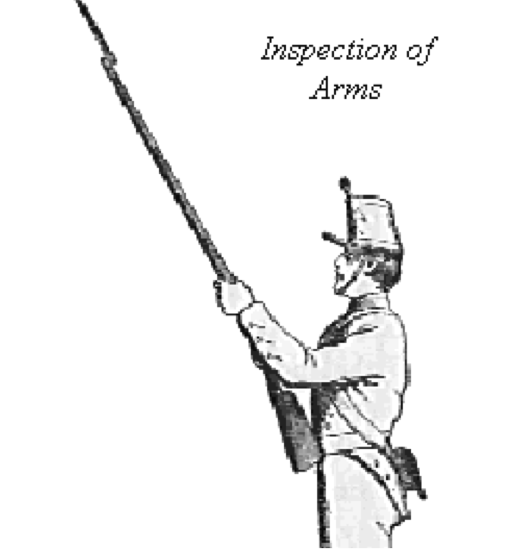
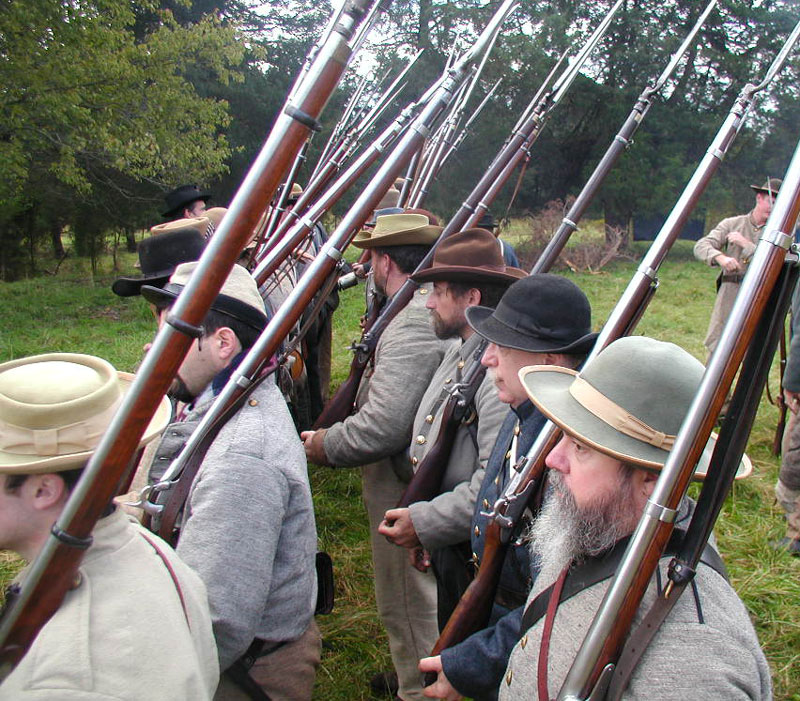
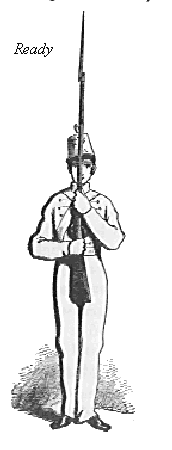
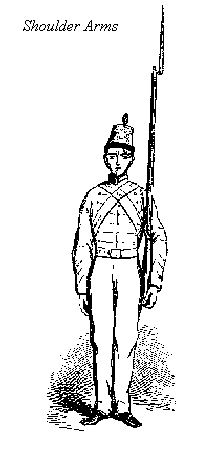


 Gilham’s work was nothing new. It was simply a compilation, and rehash, of others material such as Hardee, Scott, Poinsett, etc. Nonetheless, the strength of Gilham’s text is in what it includes. For the volunteer and militia officer, it leaves almost nothing out. In one single volume, an officer is instructed in the drill, duties (line and staff officers), organization of the various arms and army, advice on fighting and tactics, explanation of weaponry and ammunition, target practice, conducting courts martial, music, and a glossary of all terms used. For the citizen-turned-soldier, it is the most complete textbook for the training and supervision of commands. For this reason, General Philip Kearney wrote the publisher (Charle Desilver of Philadelphia) on August 3, 1861 “It is comprehensive, complete, and reliable. I regard it the best Military Work that exists.” George McClellan wrote on May 23, 1861, “I…think it an excellent work to be placed in the hands of the Volunteers.” Gilham’s strength, again, is in what it includes, everything needed for a novice officer.
Gilham’s work was nothing new. It was simply a compilation, and rehash, of others material such as Hardee, Scott, Poinsett, etc. Nonetheless, the strength of Gilham’s text is in what it includes. For the volunteer and militia officer, it leaves almost nothing out. In one single volume, an officer is instructed in the drill, duties (line and staff officers), organization of the various arms and army, advice on fighting and tactics, explanation of weaponry and ammunition, target practice, conducting courts martial, music, and a glossary of all terms used. For the citizen-turned-soldier, it is the most complete textbook for the training and supervision of commands. For this reason, General Philip Kearney wrote the publisher (Charle Desilver of Philadelphia) on August 3, 1861 “It is comprehensive, complete, and reliable. I regard it the best Military Work that exists.” George McClellan wrote on May 23, 1861, “I…think it an excellent work to be placed in the hands of the Volunteers.” Gilham’s strength, again, is in what it includes, everything needed for a novice officer.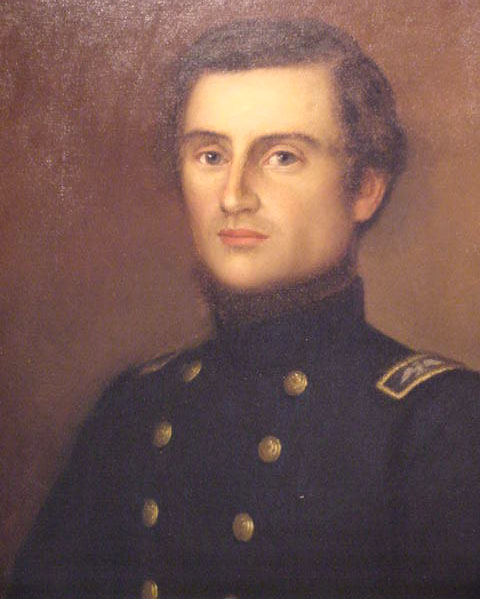

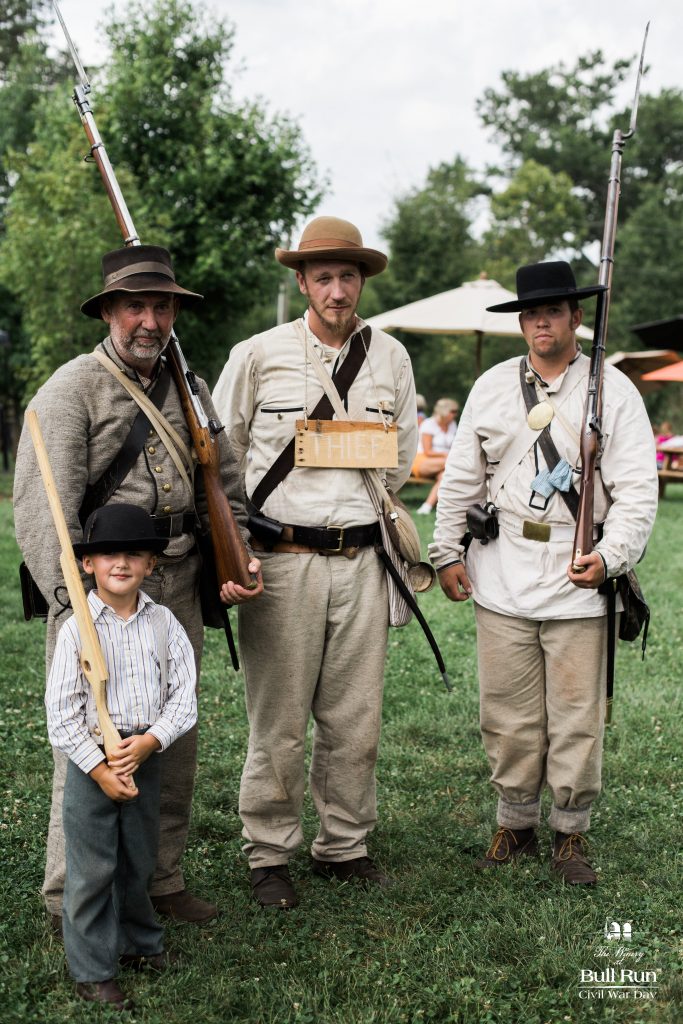


 Rufus Dawes of the famed Iron Brigade penned on of the most vivid and informational memoirs of any officer in the Army of the Potomac. Having witnessed some of the heaviest firefights of the war, Dawes wrote with some amazement of his regiment’s participation in the Battle of South Mountain. In this particular action, Major Dawes wrote that the 6th Wisconsin Infantry moved forward: “The left wing fired a volley into the woods, and the right wing advanced in the same manner over them and fired a volley into the woods. Once more [Lieutenant Colonel Edward] Bragg gave a volley by the left wing. There were four volleys by wing given, at the word of command. In a long experience in musketry fighting, this was the single instance I saw of other than fire by file.” It seems interesting that this battle tested officer would mention that only once during the war did he ever witness fighting done by command other than fire by file.
Rufus Dawes of the famed Iron Brigade penned on of the most vivid and informational memoirs of any officer in the Army of the Potomac. Having witnessed some of the heaviest firefights of the war, Dawes wrote with some amazement of his regiment’s participation in the Battle of South Mountain. In this particular action, Major Dawes wrote that the 6th Wisconsin Infantry moved forward: “The left wing fired a volley into the woods, and the right wing advanced in the same manner over them and fired a volley into the woods. Once more [Lieutenant Colonel Edward] Bragg gave a volley by the left wing. There were four volleys by wing given, at the word of command. In a long experience in musketry fighting, this was the single instance I saw of other than fire by file.” It seems interesting that this battle tested officer would mention that only once during the war did he ever witness fighting done by command other than fire by file.